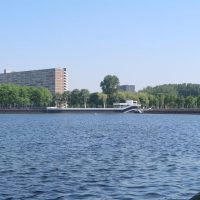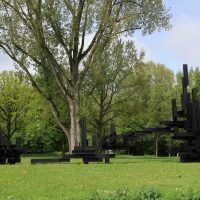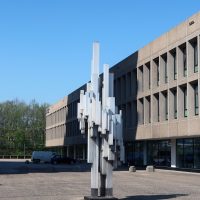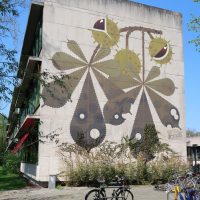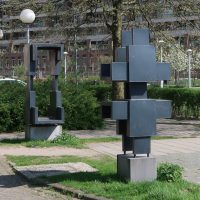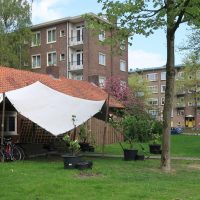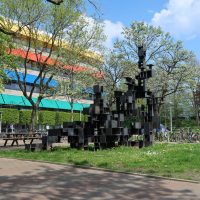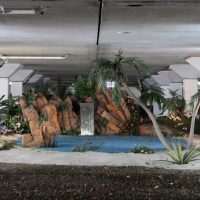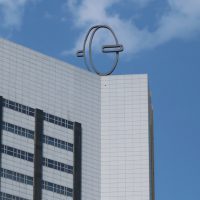Betonreliëf, Lex Horn, 1960
Krelis Louwenstraat 1
“What were they talking about? About art, yes, but it was as if their hearts did not have say”.
This is something you could say about any artwork outdoors: what does it do here? It’s what Lex Horn wrote in his diary after he was appointed advisor of the government committee on art commissions at the University of Technology. What is art doing here on this campus, “in between these intimidating buildings towering over me? Where sculptures, clearly not meant for this, stand awkwardly and afraid, next to cars, metal against metal, an aesthetic joke, cultural curls”.
Lex Horn was a multi-faceted artist. He made drawings, paintings, sgraffitos (concrete reliefs), glass appliqués and tapestries. His diaries show he was very critical of himself and of others. But he also wrote about the reason for and justification of his own work.
In 1951, during the reconstruction of the Netherlands after World War Two, the government introduced the so-called Percent-for-Art principle, which required that one or one and a half percent of a development project’s budget be spent on ‘decoration’. In a relatively short period of time new buildings were furnished with monumental art like stained-glass windows, sgraffitos, mosaics and other decoration.
The question ‘what is the purpose of art here?’ clashes with the principle of ‘art because it is required’. After his first consultation with the university in Eindhoven he made the following note in his diary: “What were these people talking about? About art, yes, and perhaps not entirely uncritical. But it was as if their hearts, their feelings, did not have a say”. After this phase of despair, Lex Horn did in the end supply the university with two tapestries.
He made a work for the Hendrick de Keyser building too, a monumental concrete wall relief. The building, once a school for engineers, now accommodates artists and creative entrepreneurs. If Lex Horn were alive, he would be happy to find that in this building all hearts have a say.
More information
Redactie (2002) ‘Doorsnede man’ en ‘Doorsnede vrouw’, in: Cursor 26, Eindhoven: TUe.
